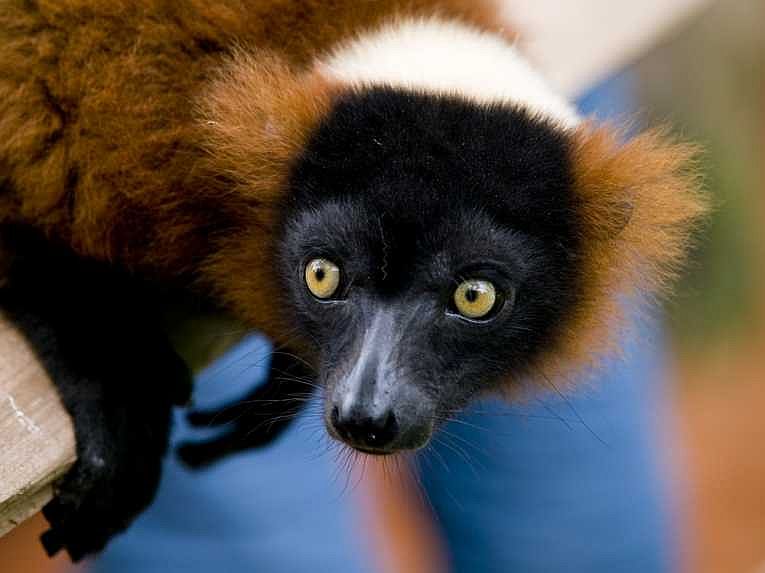Alejandro Estrada of the National Autonomous University of Mexico and a large number of prestigious colleagues from universities worldwide have produced the latest extinction bombshell on why we are losing most of the primates. Science Advances presents the paper entitled Impending extinction crisis of the world’s primates: Why primates matter.
The threats involved are human-induced, varying from logging and other deforestation activities to hunting, illegal trade and massive agricultural expansion to feed large populations.
Surprisingly, perhaps, the primates are one of the most species-rich orders of mammals. 701 taxa represent 504 separate species from the gorillas to the pygmy marmoset. 60% are under the threat of extinction. While Madagascar is the most obvious problem, with 87% of species threatened there, Asia has almost the same level of threats, with Africa and the Neotropics around the 36-37% level.
The nitty-gritty of species threatened is a lengthy list, given those huge numbers. Immediate actions are needed everywhere, with starvation threatening some human populations, multinational companies threatening to demolish great areas of remaining primary forest and other habitats and climate change affecting natural communities even more than our human populations. The need for conservation extends of course to all the smaller (and larger) species in the same habitat, some of which are even better known than the monkeys and apes involved.
Palm oil plantations are always at the front of the problem, but Chinese and Indian rubber plantations threaten 2 species of gibbon and langur, gibbon and slow loris respectively. The threat is also in the future as 68% of the current primate areas will be used for future agricultural production, unless we change these destructive plans. It would be simple to divert agriculture into areas where less environmental impact would result, compared to the removal of farms once they have established themselves in critical habitat.
The rosewood, Dalbergia is harvested unsustainably in Madagascar to add to the woes of conservationists there. Protected areas contain much of the rosewood forest. Other trees too are logged in every primate habitat, leading to a sad loss of food and shelter for the animals. As far as mining is concerned, it has been sometimes difficult to trace effects such as that of mining operations. Bushmeat hunting by those involved in tin, gold, diamonds and coltan in the Congo has decreased the populations of Grauer’s gorilla, Gorilla beringei graueri and several other species markedly.
The unexpected can cover road access effects and damming activities. New settlements present problems, including predation by dogs and the spreading of parasitic organisms and pathogens. Hunters can obviously progress into pristine areas when road networks expand by 25 million km (15.5million miles) by 2050. Dams in most continents tend to add to the loss of forest in protected areas. In Malaysia another gibbon, Hylobates muelleri is likely to become even more endangered when 2425km 2 of its Sarawak rainforest habitat is flooded.
Management of crisis areas is increasing, to mitigate the effects of animal feeding on agricultural crops. With their food supply reduced, baboons, chimpanzee and orangutans tend to invade farms. In Sulawesi, however, macaques aid cashew collection by eating only the fruit, while the farmers can collect the nuts that then fall to the ground.
This is all small-scale of course, while the emphasis has to be on preventing the large-scale loss of habitat, animals and, soon, the species themselves. Forest fragmentation leads to loss of genetic diversity in many South American monkeys, Chinese colobus monkeys and the apes of Borneo (orangutan) and Africa (Cross River gorillas, Gorilla gorilla diehli. More obviously population decline in many cases has been catastrophic.
In similar fashion, the pet trade has limited effects when individual animals are considered. For an endangered monkey, though, species laundering is a growing phenomenon whereby a common species is mixed with a rare animal in order to confuse customs officers who are then unable to distinguish the illegal trade. Skins, body parts, and even bushmeat and amulets also cross borders regularly without any great integration of criminal intelligence networks. In a more positive tone, a range of primates can be reintroduced into their habitat, from lar gibbons, to golden lion tamarins and western gorillas to slow loris. They have all used carefully rescued and rehabilitated animals to recolonise areas in which they have become extinct.
The paper is lengthy (please have a look at it) and quite alarming, without assuming that primate extinction is inevitable. The acceleration in loss of species must be reversed by sustainable solutions, but if these actions are not taken, we have no time left in which to try again. Without action this year, even today, many primates and other species in the same habitats will simply disappear, as many species have already. The loss to ecosystems as well as the loss to our cultures and understanding of the natural world will be immense. There will be no better time to resist the march of total agriculture and industry to dominate every inch of the planet.










